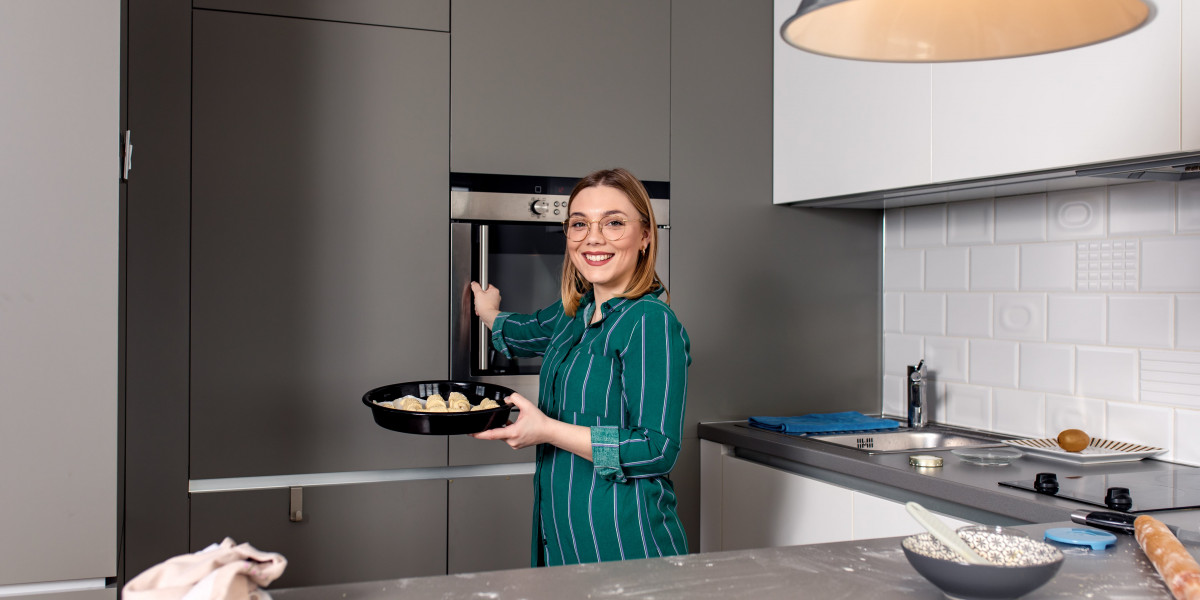The Ultimate Guide to Built-in Ovens: Enhancing Your Kitchen Experience
Built-in ovens have actually ended up being a popular option in modern cooking areas, providing a mix of functionality, design, and convenience. Unlike standard freestanding ovens, built-in ovens are integrated perfectly into cabinetry, offering a streamlined appearance that can improve the visual appeal of any kitchen. This article explores the different kinds of built-in ovens, their benefits, installation considerations, and upkeep suggestions.
Comprehending Built-in Ovens
built in electric oven and hob-in ovens are designed to be installed straight into kitchen cabinetry, enabling a more customized kitchen setup. They normally can be found in 2 primary types: single and double ovens.
Types of Built-in Ovens
Single Ovens: These units offer one cooking compartment, suitable for smaller cooking areas or homes where cooking demands are modest.
Double Ovens: As the name suggests, these systems feature 2 different cooking compartments, permitting users to prepare multiple dishes at various temperatures at the same time. This is especially useful for large families or those who typically entertain guests.
Steam Ovens: These ovens cook food using steam, which can assist maintain moisture and nutrients. Steam ovens are getting appeal due to their health advantages.
Combination Ovens: These versatile appliances combine the functions of a routine oven and a microwave, making them ideal for quick cooking and reheating.
Key Features to Look For
When considering a built-in oven, there are a number of functions that can improve your cooking experience:
Smart Technology: Many modern-day built-in ovens come geared up with wise innovation, enabling users to manage their oven remotely by means of smartphone apps. Features include preheating the oven, changing cooking times, and monitoring cooking development.
Self-Cleaning Functions: Built-in ovens with self-cleaning capabilities can save time and effort in kitchen maintenance.
Convection Heating: This feature flows hot air for even cooking, making it perfect for baking.
Security Features: Look for designs equipped with functions like cool-to-the-touch oven doors and automated shut-off choices for included safety.
Benefits of Built-in Ovens
Visual Appeal: Built-in ovens provide a smooth and modern-day look that can improve the total design of a kitchen. They can be integrated into kitchen cabinetry, making them less intrusive than freestanding designs.
Area Efficiency: Built-in ovens enhance kitchen space, particularly in smaller kitchens where every inch counts. They can be placed at eye level, making it simpler to keep track of cooking without flexing down.
Enhanced Functionality: With their advanced features, sia Amzdo102 Cookology COF600BK 60cm Black Electric Oven - Buy Now! built-in double oven - Indesit 60cm Stainless Steel Electric Oven - Affordable Quality - Www.ovensandhobs.uk, ovens offer improved cooking experiences and increased functionality compared to traditional ovens.
Installation Considerations
Setting up a built-in oven requires cautious preparation and consideration. Here are some bottom lines to keep in mind:
Space Requirements: Ensure that the selected oven fits comfortably into the offered cabinet space. Procedure the measurements precisely, accounting for ventilation and clearance requirements.
Electrical Requirements: Built-in ovens typically require a devoted electrical circuit. Seek advice from an electrician for proper installation.
Ventilation: Proper ventilation is essential for optimal oven efficiency. Validate that the installation area has appropriate ventilation to avoid getting too hot and make sure safe operation.
Expert Installation: While DIY installation may seem tempting, getting the help of a specialist can ensure that the oven is set up correctly and safely.
Installation Steps
| Setup Step | Description |
|---|---|
| Step 1: Measure | Procedure the cabinet opening for your oven. |
| Action 2: Prepare | Prepare the electrical outlet and ventilation alternatives. |
| Action 3: Connect | Link the oven to power, making sure all precaution are abided by. |
| Step 4: Secure | Secure the oven within the kitchen cabinetry, using proper screws and brackets. |
| Step 5: Test | Run a test to guarantee the oven is operating appropriately. |
Upkeep Tips
Regular upkeep can extend the life of your built-in oven and guarantee optimum efficiency. Here are some upkeep pointers:
Clean Regularly: Wipe down the oven outside and tidy the interior routinely. Usage self-cleaning functions where available.
Examine Seals: Ensure that door seals are intact to preserve effectiveness and cooking efficiency.
Monitor Performance: Pay attention to how your oven functions-- if you see unequal cooking or uncommon noises, it may need professional maintenance.
Follow Manufacturer Guidelines: Always comply with the maintenance guidelines offered by the maker. This can assist avoid issues and make sure that service warranties stay valid.
Frequently Asked Questions about Built-in Ovens
What is the difference between a built-in oven and a freestanding oven?
- Built-in ovens are integrated into cabinetry, using a structured look, while freestanding ovens are standalone appliances that can be placed anywhere in the kitchen.
Do built-in ovens need more maintenance than regular ovens?
- Not necessarily. Maintenance depends on usage and cleansing routines more than the kind of oven. Routine care is important for all ovens.
Can I install a built-in oven myself?
- While it is possible to set up a built-in oven yourself, it is suggested to hire a professional to guarantee safe and accurate setup, especially relating to electrical requirements.
What are the typical costs of built-in ovens?
- Costs can differ substantially based upon brand, functions, and specs. Basic models might start around ₤ 800, while high-end models can surpass ₤ 3,000.
Are built-in ovens energy-efficient?
- Many contemporary built-in ovens are designed to be energy-efficient. Try to find designs with an ENERGY STAR accreditation for the best efficiency.
In conclusion, built-in ovens are an excellent addition to any modern kitchen, integrating looks with functionality. By comprehending the different kinds of built-in ovens, their features, and the associated setup and maintenance requirements, house owners can make an educated decision that enhances their cooking experience and total kitchen style. As cooking technology develops, built-in ovens are likely to play an integral function in the future of home cooking areas, guaranteeing scrumptious meals are prepared with ease and benefit.






